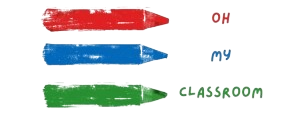
General teacher tips and ideas at the kindergarten level involve practical strategies and creative approaches to support young children’s learning, engagement, and development. These foundational practices are essential for effective teaching and include:
- Create a Welcoming Environment: Arrange the classroom with colorful visuals, cozy reading corners, and accessible materials to make children feel safe and excited to learn. For example, use a rug with letters or numbers for circle time to combine comfort and education.
- Incorporate Hands-On Activities: Use manipulatives like blocks, puzzles, and sensory bins to make learning interactive. For instance, teach counting by having children sort buttons into groups, reinforcing numeracy through play.
- Differentiate Instruction: Recognize diverse learning needs by offering varied activities, such as providing tracing sheets for children struggling with writing while challenging others to write simple words independently. This ensures all students progress at their own pace.
- Use Storytelling and Songs: Engage children with animated storytelling, rhymes, and songs to build literacy and social skills. Singing “The Wheels on the Bus” can teach vocabulary and encourage participation, while a story like The Very Hungry Caterpillar introduces sequencing.
- Foster Social-Emotional Learning: Teach empathy and cooperation through activities like role-playing or group projects. For example, have children work together to build a block tower, discussing how to share and solve conflicts.
The importance of these tips and ideas at this stage is significant:
- Engagement and Motivation: Creative, hands-on activities capture young learners’ attention, making education enjoyable and fostering a love for learning.
- Holistic Development: These strategies support cognitive, social, emotional, and physical growth, ensuring well-rounded development.
- Classroom Management: A structured yet flexible environment reduces behavioral issues, allowing more time for meaningful learning.
- Individual Growth: Differentiated instruction ensures every child’s needs are met, promoting confidence and progress.
- Long-Term Success: Early positive experiences with learning set the foundation for academic achievement and lifelong curiosity.


